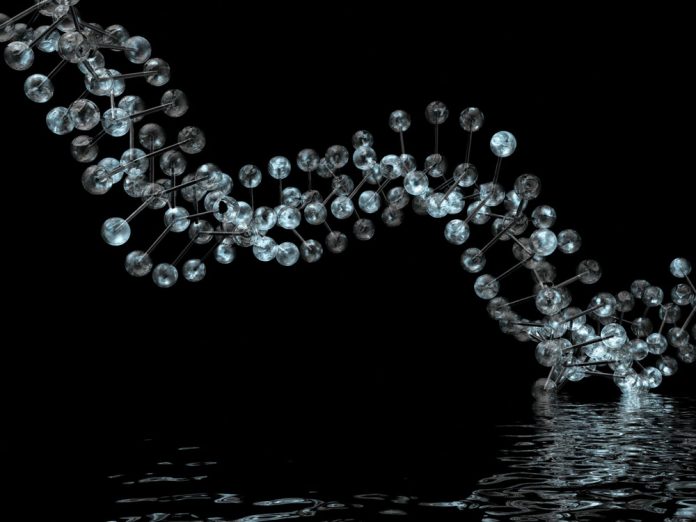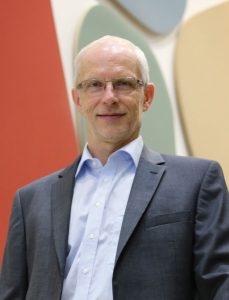
Per Nielsen’s research is unlocking the identity of microbial life in activated sludge and shows that understanding the functions of different bacteria can greatly optimise the performance of treatment plants
By James Workman
Many professionals describe the biological treatment of wastewater as “bug farming,” where operators feed pollutants to microorganisms, which help break the sewage down to recover clean, valued resources. Yet bugs are surprisingly fussy eaters. They prefer specific pollutants, won’t touch others, and their fickle appetites hurt the performance of treatment plants. If you could just identify the species of bacteria, you’d know what food and environmental conditions they’d enjoy.
“Easier said than done,” says Erik Bundgaard, Vice President, Director of Technology, KRÜGER A/S. “Raw wastewater entering the treatment plant contains billions of bacteria per millilitre coming from all kind of sources. The work, the time and the resources required to have sufficient knowledge about the bacteria has been a barrier for progress in the past.”
One consequence of not being able to identify bacteria is the problem of bulking and foaming, which affects 30 percent of the world’s activated sludge wastewater treatment plants. Bulking occurs when sludge does not settle after air has been pushed through the wastewater. It lowers effluent quality and drives up costs yet it is endemic to the engineering, hydraulic and microbiological dynamics of the process. Plant operators can design and manipulate those first two components but the third has remained off limits–until now.

The key, as microbiologist Per Halkjaer Nielsen explains, is to link the identity of a microbe with its function. Nielsen borrowed the tools and lessons from the decade-long, US$3 billion undertaking to map the human genome, and began applying and further developing them in order to identify the bacteria in treatment plants, the better to feed, nurture, and cater to their needs. In a process called metagenomics, his team extracts DNA from a water or sludge sample, chops it into pieces, sequences it and by using bioinformatics tools, puts it together in genomes for the individual species.
“By looking into the DNA of the microbes in wastewater treatment plants, or any other ecosystem, we can get two types of important info: identification of the microorganisms and some understanding of their function,” says Nielsen.
It was as a student in Denmark in the 1970s that Nielsen first began to apply microbial ecology to problems like eutrophication, and later, sewer systems.
“I could see the microbes were the work-horses in wastewater treatment,” he says, but he also noted how they also created their own problems like bulking and foaming.
Interestingly, Nielsen also spent time in the medical field and his cross-cutting exposure to the treatment of living human systems, living ecosystems, and living wastewater systems revealed a common denominator: All living organisms have DNA.
The DNA revolution
Nielsen’s discoveries could lead to a range of benefits. Among the advantages: less bulking and foaming, reduced need for chemicals and energy, maintained plant stability, better effluent quality, and higher recovery of nutrients like phosphorus. DNA analyses identify indicator species, to serve as early warning systems for pathogens, and micro-pollutants, and allow for control strategies.

“The overall benefit from this research at Aalborg University will be that treatment of wastewater can be much more targeted even where the conditions have formerly been a challenge,” says Bundgaard, a converted sceptic. “Knowledge and better understanding of this will bring benefits both from an economical and environmental point of view.”
In contaminated drinking water, ‘source tracking’ can now use molecular tools to detect and trace unique fingerprints to the contaminating microorganisms, and remove the pollution source.
Last year, Nielsen’s discovery of the enigmatic Comammox bacteria, helped oxidise ammonium directly to nitrate in one step, which fundamentally changed our understanding of the nitrogen cycle in nature and engineered systems.
Indeed, the DNA revolution may irreversibly alter our relation with the water systems we depend on. Nielsen speaks of unlocking the “circular economy” by augmenting the traditional treatment process. “All parts of this circle consist of microbes–influent, primary sludge and external sources, activated sludge, digester, recovery of nutrients, and polishing of the effluent–in all cases a surveillance of the microbiology will help optimise the plant and the entire circular economy,” he says.

By collaborating with companies like KRÜGER A/S, Nielsen’s research centre offers a pioneering model of cooperation between industry and universities. There is healthy tension as both parties challenge each other over competing priorities. Curious university researchers wish to overturn each rock in a desire to know everything, while the industry side seeks operational results which can be rapidly applied in “real life”.
Where industry is slow to pick up and apply lessons, Nielsen’s team is developing a for-profit business venture. “The DNA methods are still not a ‘normal’ part of the solution as only few companies offer to do that,” he said. “That is also why we have set up a company, DNASense that provides such services”.
Demand will vary by place. But from a web tracking source, MiDAS, there appears to be a growing and universal need to decipher wastewater. A microbiome has a particular metabolic function unique to a treatment plant, whether it’s located in northern China, eastern Brazil, or southern Portugal. Wherever there had been a mystery over the content of wastewater, it can now be affordably and accurately unlocked. The DNA sequencing process–giving a name tag to hundreds of microorganisms– can turn a mysterious liquid into a clearly identifiable table of contents. They can serve as “knowledge banks, like a Google for wastewater”.

Nielsen’s excitement is infectious, yet cultural barriers remain. The still novel technology is not for everybody, he concedes. Only highly skilled people can carry out investigations, generate data, or handle and interpret the results. “But results are coming fast,” he promises. “Within the next few years it will be possible to carry out DNA analyses on-site in almost real time, also by non-specialists, and this will be a real game-changer.”
Indeed, the potential power and precision of DNA sequencing may break down artificial divisions between ‘natural’ and ‘man-made’ water systems. We may better understand what is happening in our ‘healthy’ biome, or how it occurs. Still, when typically sober research scientists exclaim how “the potential is beyond our dreams” one might grow wary.

“I know we should be cautious saying so,” Nielsen agrees, before adding that 15 years ago, before mapping of the human genome in 2000, we had no idea about what such knowledge could be used for. “Now we have learned a lot about many diseases, and much better diagnostics can be carried out. And as more customised treatments are available, we have begun talking about ‘personalised’ medicine–all thanks to genome research.”
The same is true for environmental microbial systems he adds, before catching himself. “Or more correctly spoken, it will be so!”
While toiling away in obscurity, the quest for immortality is not far from the minds of the research scientist. One may dive deep into the sea, or hack through a tropical jungle in a lifelong quest to discover, and perhaps name after yourself, a new species of plant, insect, or, on the rare occasion, a mammal. But what if you could discover and name an entirely new phylum?
Nielsen’s team has done just that. An investigation of 38 anaerobic digesters at wastewater treatment plants revealed that one of the most abundant bacteria belonged to a hitherto undescribed phylum, called Hyd24-12.
At a microscopic level, said Nielsen, the feeling corresponds to being able to see, dissect and describe the first new sub-category in an entire kingdom such as “bird” or “fish”.
His team was able to capture the entire genome sequence, which could reveal its possible function in the digesters. They then proceeded to give their new phylum the name “Fermentibacteria” after this function.
Such breakthroughs didn’t just happen, overnight. They emerged through three key turning points.
First, in 1999 he developed a new method (FISH –MAR) to investigate the physiology of uncultured bacteria–directly in situ by microscopy and radiotracers. Next, in 2007 he moved from environmental engineering to biotechnology, which gave him access to advanced technologies to study DNA, proteins and metabolites.
Then, Aalborg University established and appointed him head of the Centre for Microbial Communities, a multidisciplinary hub with 30-40 researchers from several countries. Each stage combined exposure to state-of-the art equipment, alongside experts who had never worked together but were eager to collaborate.
Fermentibacteria is the result.







